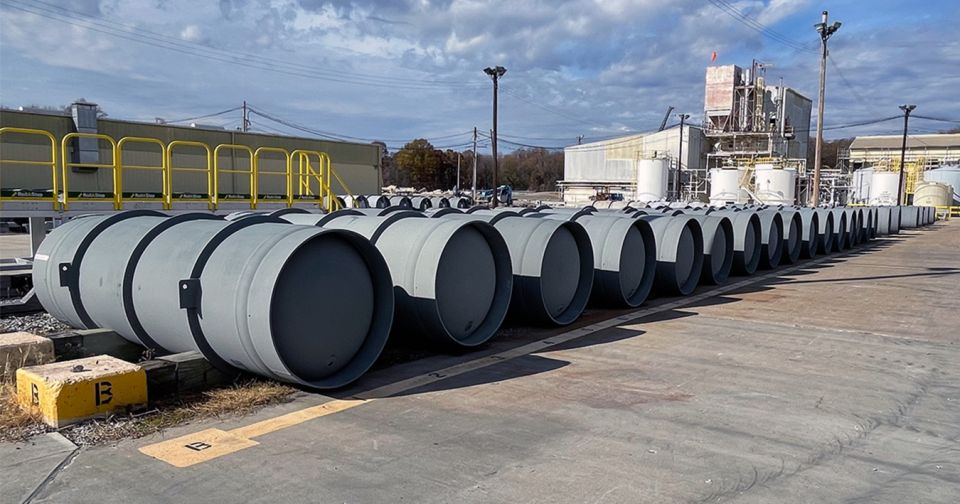General Atomics’ SiGA-cladded test rods complete irradiation testing in the ATR

General Atomics Electromagnetic Systems (GA-EMS) announced last week that unfueled test rods featuring the company’s SiGA fuel cladding—made of a silicon carbide composite material—successfully survived 120 days of irradiation in the Advanced Test Reactor (ATR) at Idaho National Laboratory.
The rods, clad in SiGA, remained intact and showed no significant mass change after they were removed from the ATR, which GA said could help validate the robustness of the cladding after exposure to high neutron flux in a pressurized water reactor environment. More examinations are underway to determine if individual rods maintained gas-tight integrity without degradation, leaking, or structural change.
“The testing results offer critical, quantifiable, and independent validation that our SiC cladding technology is on the right path to provide a safe, suitable, accident tolerant fuel cladding solution for the nuclear fleet,” said Scott Forney, president of GA-EMS. “This success is a key milestone on SiGA cladding’s development path to enhance the safety of the existing U.S. fleet of light water reactors, particularly during an unlikely event of an accident. It could also do the same for the future generation of advanced nuclear power systems.”
More on the cladding: SiGA is designed to help nuclear fuel rods survive higher temperatures than conventional zirconium alloy fuel cladding can reliably withstand.
GA-EMS says SiGA’s “multilayered SiC composite cladding structure is sealed with a fully-SiC joining process” to provide “greater stability and safety at temperatures up to 1,900°C, well beyond that of metal fuel rod claddings.” According to GA-EMS, the new cladding is more chemically stable as well, “virtually eliminating the risk of generating potentially explosive hydrogen during loss-of-cooling accidents.”
A video posted by GA last week shows SiGA cladding and a zirconium alloy cladding side by side during a simulated loss of coolant test performed by Mitsubishi Nuclear Fuel Co. The video shows the metal alloy cladding ballooning in high-temperature steam and later dispersing surrogate fuel material into cooling water.
If future testing is successful, SiGA cladding could also help reactors reach higher powers and longer fuel lifetimes, enhancing overall reactor performance and economics, according to GA-EMS. The company has been under contract with the Department of Energy to support the Accident Tolerant Fuel Program and develop its cladding technology for future deployment in U.S. nuclear reactors.
“We look forward to continuing our partnership with the DOE and the national labs to accelerate the irradiation testing to demonstrate the performance of fueled SiGA-clad rods,” said Christina Back, vice president of GA-EMS Nuclear Technologies and Materials. “The planned test series progressively builds up performance data to show that SiGA cladding can effectively contain the fuel and any gasses that are produced when subjected to irradiation and high temperature.”
DOE: A December 5 news release from the DOE explains that additional irradiation experiments on SiGA-clad unfueled rodlets in research reactors at INL, Oak Ridge National Laboratory, and the Massachusetts Institute of Technology could help verify the cladding’s material properties and strength. Future testing on fueled rodlets will precede irradiation in commercial power reactors, with performance data supporting licensing efforts.
“We are scaling up to full size, 12-foot-long SiGA rods and will then be doing the irradiation testing in actual commercial reactors with deployment targeted for the mid-2030 timeframe,” Back said. “We remain committed to bringing SiGA’s unique safety and efficiency benefits to the nation’s nuclear fleet.”
Beginning in fiscal year 2025, SiGA cladding will be funded through DOE’s new Next Generation Fuels Program, which supports industry through financial assistance and lab-based research and development to significantly outperform today’s fuel by focusing on developing and maturing longer-term, high-risk, high-reward fuel concepts.








